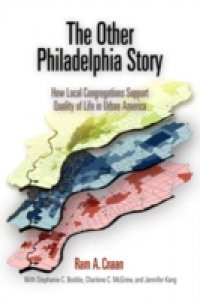For people living in U.S. cities, social services come not only from the government but increasingly also from local religious communities. Ever since the Clinton administration's welfare reform, faith-based institutions, and especially congregations, have been allowed to bid for federal funds for their programs. In The Other Philadelphia Story, drawing on the first-ever census of congregations in any American city, Ram Cnaan and his colleagues provide an authoritative account of the functioning of congregations, their involvement in social services, and their support of other charitable organizations.An in-depth study of 1,392 congregations in Philadelphia, the book illuminates how these groups function as community hubs where members and neighbors alike gather throughout the week. Cnaan's findings show that almost every assembly of parishioners emphasizes caring for others, even if the help is modest. Thus American congregations uphold an implicit but strong norm of social responsibility and work to improve the quality of life for members and nonmembers alike.Many of the problems associated with urban life persist in the face of governmental inaction, and the burden of responsibility cannot be shouldered entirely by congregations. However, in a city such as Philadelphia, where half the residents are regular attenders of religious congregations, hopes for urban improvement are largely to be found in these local groups.Special focus is given in the book to kinds of care that often go unnoticed: volunteerism, provision of refuge, and informal assistance to community members in need. All told, Cnaan asserts, congregations are an essential component of Philadelphia's civil society. Without them, the quality of life would deteriorate immeasurably.

